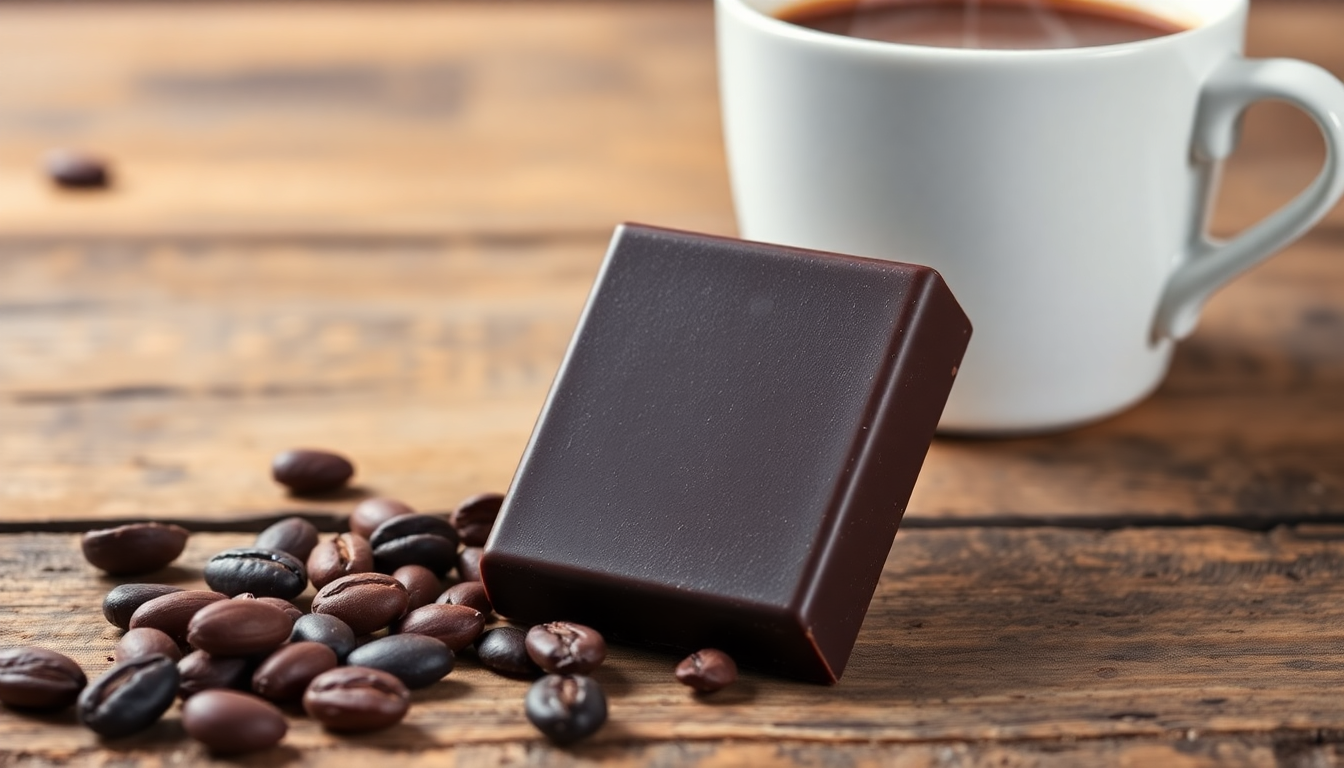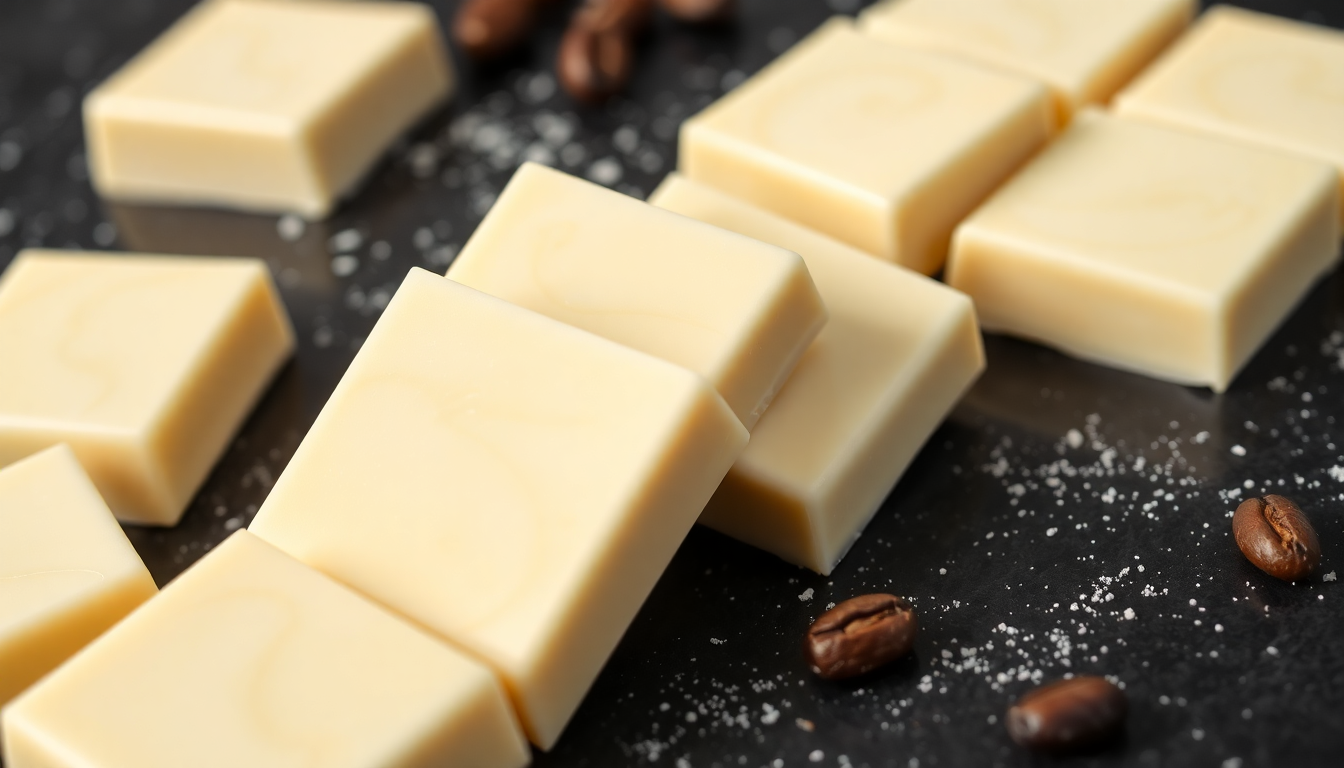
Does Chocolate Have Caffeine? The Complete Guide to Understanding Chocolate's Natural Stimulants
Does chocolate have caffeine? This question frequently arises among chocolate lovers who want to understand what they're consuming, especially those monitoring their stimulant intake for health reasons or sleep quality. The straightforward answer is yes—chocolate does contain caffeine, but the amount varies dramatically depending on the type of chocolate, cacao percentage, and processing methods used in production.
Understanding chocolate's caffeine content goes beyond simple numbers, involving the fascinating interplay between caffeine and theobromine, chocolate's primary stimulant compound. This comprehensive guide will explore everything you need to know about stimulants in chocolate, helping you make informed decisions about your favorite indulgence.
The Science Behind Caffeine in Chocolate
Natural Origins of Chocolate Stimulants
Caffeine in chocolate occurs naturally within cacao beans, the seeds of the Theobroma cacao tree. These remarkable beans contain not just caffeine, but also theobromine, a closely related compound that provides chocolate's characteristic mood-enhancing and energizing effects. Unlike synthetic caffeine added to energy drinks or sodas, chocolate's stimulants come directly from the plant source.
The concentration of these compounds depends on several factors including cacao variety, growing conditions, fermentation processes, and manufacturing techniques. Criollo and Trinitario cacao varieties, considered the finest quality beans, typically contain higher levels of beneficial compounds compared to the more common Forastero variety used in mass-produced chocolates.

Processing methods significantly impact final caffeine content. Raw or minimally processed cacao retains higher levels of naturally occurring stimulants, while heavily roasted and processed chocolate may have reduced caffeine content but altered flavor profiles.
Understanding Theobromine: Chocolate's Primary Stimulant
While caffeine gets most attention, theobromine actually comprises the majority of chocolate's stimulant content. This compound, whose name derives from Theobroma (meaning "food of the gods"), provides gentler, longer-lasting effects compared to caffeine's more immediate but shorter-duration impact.
Theobromine offers several unique characteristics that distinguish it from caffeine: it provides sustained energy without jitters, supports cardiovascular health through vasodilation, and contributes to chocolate's mood-enhancing properties. The combination of caffeine and theobromine creates synergistic effects that explain why chocolate provides such a pleasant and balanced energy experience.
Caffeine Content Across Different Chocolate Types
Dark Chocolate: The Highest Caffeine Content
Dark chocolate contains the highest caffeine levels among chocolate varieties, with content directly correlating to cacao percentage. Higher percentages mean more cacao solids and consequently more naturally occurring stimulants.
Here's the typical caffeine breakdown for dark chocolate:
- 70-85% dark chocolate: 12-30 mg caffeine per ounce (28g)
- 60-69% dark chocolate: 8-18 mg caffeine per ounce
- 45-59% dark chocolate: 5-12 mg caffeine per ounce
Premium dark chocolates like 81% Dark Chocolate varieties provide substantial caffeine content alongside maximum nutritional benefits from minimally processed, organic cacao beans. These artisanal chocolates retain higher levels of beneficial compounds through careful manufacturing processes.

For those seeking maximum stimulant content, 99% Sugar-Free Dark Chocolate represents the upper limit of caffeine concentration in chocolate form, providing nearly pure cacao experience with minimal processing and no added sugars.
Milk Chocolate: Moderate Caffeine Levels
Milk chocolate contains significantly less caffeine than dark varieties due to lower cacao content and the addition of milk solids and sugars. Typical milk chocolate contains:
- 5-10 mg caffeine per ounce
- 20-40% cacao solids (compared to 70%+ in dark chocolate)
- Higher sugar content that dilutes caffeine concentration
The caffeine in milk chocolate rarely causes stimulant effects in most individuals, making it suitable for those seeking chocolate flavor without significant caffeine intake.
White Chocolate: Zero Caffeine Content
White chocolate contains no caffeine because it's made from cacao butter, sugar, and milk solids without any cacao solids where caffeine naturally occurs. If you're completely avoiding caffeine, white chocolate provides the only truly caffeine-free chocolate option.
Comparing Chocolate's Caffeine to Other Sources
Putting Chocolate Caffeine in Perspective
Understanding chocolate's caffeine content becomes clearer when compared to other common caffeine sources:
- 8 oz brewed coffee: 80-100 mg caffeine
- 8 oz black tea: 40-50 mg caffeine
- 12 oz cola: 30-40 mg caffeine
- 1 oz dark chocolate (70%): 12-25 mg caffeine
- 1 oz milk chocolate: 5-10 mg caffeine
This comparison reveals that you would need to consume 3-5 ounces of dark chocolate to equal the caffeine content of one cup of coffee. For most people, typical chocolate consumption provides minimal caffeine intake compared to other dietary sources.
The Unique Chocolate Experience
What makes chocolate's stimulant effects distinct from coffee or tea isn't just the lower caffeine content—it's the presence of theobromine and other mood-enhancing compounds. This combination creates:
- Gentler energy boost without jitters
- Longer-lasting effects
- Mood elevation through serotonin and endorphin release
- Cardiovascular benefits from improved circulation
Raw Cacao: Maximum Caffeine and Nutritional Content
Understanding Raw Cacao Products
Raw cacao products like Organic Dark Chocolate blends provide the highest caffeine content because they undergo minimal processing that preserves natural compounds. Raw cacao powder contains approximately 12 mg of caffeine per tablespoon, making it easy to control intake while maximizing nutritional benefits.
The advantages of raw cacao include:
- Preserved heat-sensitive antioxidants
- Higher mineral content (magnesium, iron, potassium)
- Maximum theobromine levels
- Enhanced flavor complexity

Raw cacao products allow precise control over caffeine intake while providing superior nutritional profiles compared to heavily processed alternatives.
Cacao Processing and Caffeine Retention
The processing method significantly affects final caffeine content:
- Cold-pressed raw cacao: Retains maximum caffeine and nutrients
- Lightly roasted cacao: Slight reduction in caffeine, enhanced flavor
- High-heat processed cocoa: Reduced caffeine and antioxidant content
- Dutch-processed cocoa: Significantly reduced caffeine and nutrients
Choosing minimally processed chocolate products ensures you receive maximum benefits from cacao's naturally occurring compounds.
Health Implications of Chocolate's Caffeine Content
Positive Effects of Moderate Consumption
For most people, the caffeine in chocolate provides beneficial effects without negative side effects:
- Enhanced cognitive function and focus
- Improved mood and emotional well-being
- Antioxidant protection from free radicals
- Cardiovascular support through improved circulation
The combination of caffeine, theobromine, and other bioactive compounds in quality chocolate creates synergistic health benefits that extend beyond simple stimulation.
Considerations for Sensitive Individuals
Some people may need to monitor chocolate caffeine intake:
- Individuals with caffeine sensitivity may experience jitters or sleep disruption
- Those with certain heart conditions should consult healthcare providers
- Pregnant women should consider total daily caffeine intake from all sources
- People taking medications that interact with caffeine should exercise caution
The relatively low caffeine content in chocolate makes it well-tolerated by most individuals, but awareness remains important for those with specific sensitivities.
Maximizing Benefits While Managing Caffeine Intake
Strategic Consumption Timing
Optimizing when you consume chocolate can enhance benefits while minimizing potential sleep disruption:
- Morning consumption provides sustained energy throughout the day
- Afternoon chocolate offers gentle pick-me-up without evening interference
- Evening chocolate should be limited for caffeine-sensitive individuals
The longer half-life of theobromine compared to caffeine means chocolate's effects may last 4-6 hours, making timing considerations important for sensitive individuals.
Quality Versus Quantity Approach
Focusing on high-quality chocolate allows for maximum benefit with minimal quantity:
- Choose higher cacao percentages for more nutritional density
- Select organic, fair-trade options for superior ingredient quality
- Prioritize minimally processed products that retain beneficial compounds
A small amount of premium chocolate provides more satisfaction and nutritional value than larger quantities of lower-quality alternatives.
Choosing the Right Chocolate for Your Needs
For Maximum Health Benefits
If you're seeking chocolate's health benefits while managing caffeine intake, consider:
- Dark chocolate with 70-85% cacao content for optimal antioxidant levels
- Organic, minimally processed options that preserve beneficial compounds
- Products with simple ingredient lists free from artificial additives
For Minimal Caffeine Intake
Those wanting chocolate flavor with minimal stimulants should choose:
- Lower percentage dark chocolates (50-60% cacao)
- Milk chocolate varieties with reduced cacao content
- White chocolate for zero caffeine consumption
For Maximum Nutritional Density
Health-conscious consumers seeking maximum benefits should select:
- Raw cacao products with minimal processing
- High-percentage dark chocolates from quality sources
- Products that combine chocolate with complementary superfoods
Conclusion: Embracing Informed Chocolate Consumption
Does chocolate have caffeine? Absolutely—but understanding the nuances of chocolate's stimulant content empowers you to make choices that align with your health goals and preferences. The caffeine in quality chocolate provides gentle energy enhancement alongside numerous health benefits when consumed mindfully.
The key lies in selecting high-quality chocolates that preserve cacao's natural beneficial compounds while understanding how different processing methods and cacao percentages affect final caffeine content. Whether you're seeking maximum nutritional benefits, managing caffeine sensitivity, or simply curious about your favorite treat, knowledge about chocolate's stimulant content enables informed decisions.
Remember that chocolate's unique combination of caffeine, theobromine, and other bioactive compounds creates effects that differ significantly from other caffeine sources. This natural synergy, particularly in minimally processed chocolate products, provides the perfect balance of indulgence and wellness that makes chocolate truly special among caffeinated foods.
Choose quality over quantity, understand your personal caffeine tolerance, and enjoy chocolate as part of a balanced lifestyle that celebrates both pleasure and health.

Claire Bennett
I'm Claire, a chocolate lover and artisan based in a small town where I run a tiny home kitchen dedicated to exploring everything chocolate. From single-origin dark bars to creamy ganache and handmade truffles, I find joy in working with all types of chocolate. I believe chocolate has a story, and I love bringing that story to life through humble, heartfelt creations.



Leave a comment
This site is protected by hCaptcha and the hCaptcha Privacy Policy and Terms of Service apply.